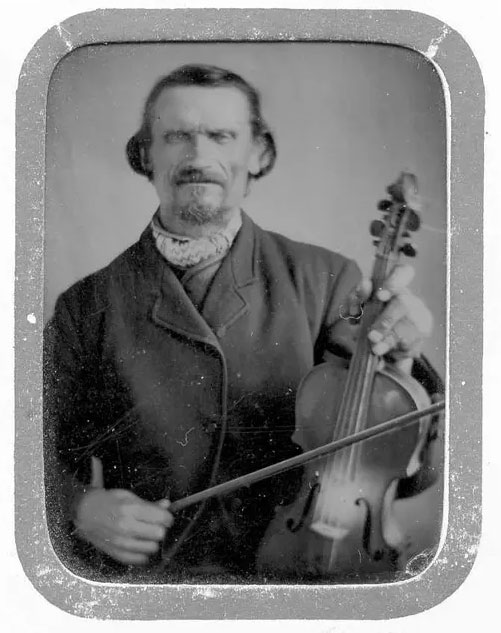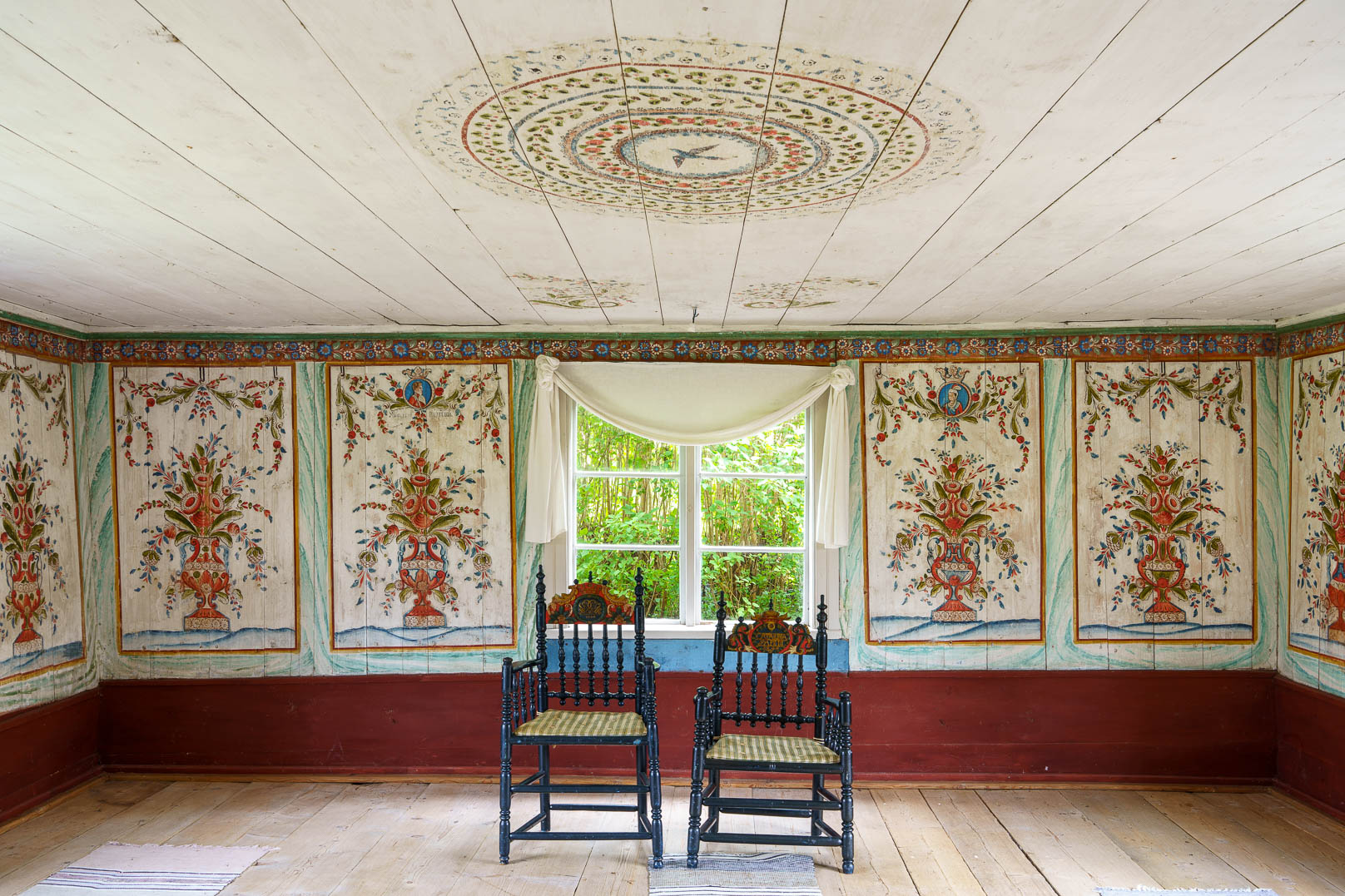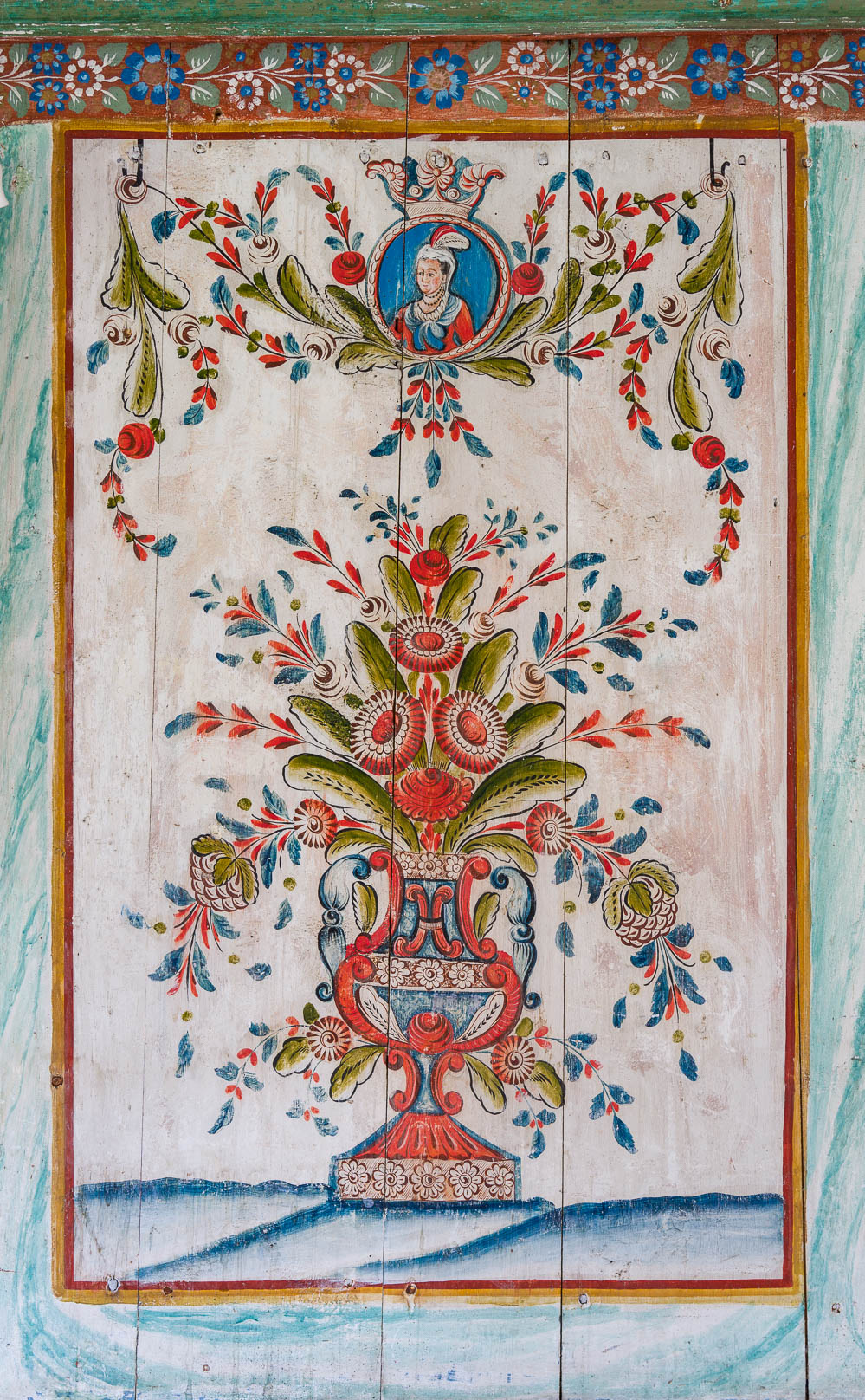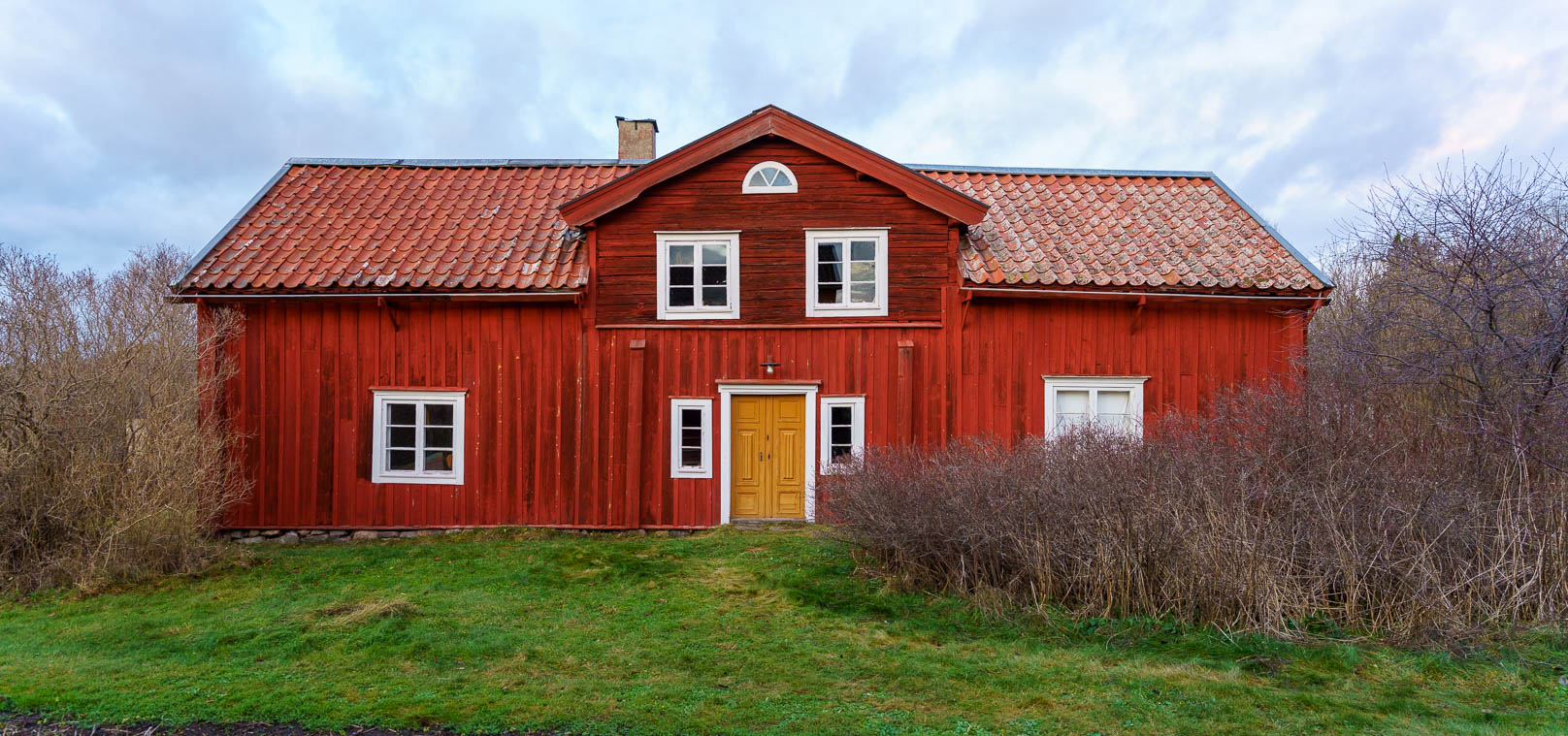History
From Farmhouse to Listed Building
We know some things about Per Jansson and his wife Kjerstin Jansdotter, but far from everything. Per was born in 1782, the son of farmer Johan Persson and his wife Carin Jansdotter. In 1811, at the age of thirty, he married twenty-year-old Kjerstin. She came from a wealthy home; her father, Jan Olovsson, owned several farms. His estate inventory testifies to a well-to-do life with silver goblets and decorated cabinets – an inheritance Kjerstin likely brought with her into the marriage.
Per Jansson became a respected man in the parish, both juryman and churchwarden. At some point he and Kjerstin decided to build Morastugan – a decision that would shape their lives but also carry a heavy shadow of sorrow. The couple had ten children, four of whom died at an early age. The year 1831 was particularly dark – their daughter Johanna, aged three, and their son Erik, only one year old, both died that year.
Around 1834 life changed drastically for Per. He was forced to stop farming, possibly due to illness, and transferred the farm to farmer Eric Ersson. He and Kjerstin moved to a crofter’s cottage on the estate. Kjerstin died in 1844, and Per followed her three years later, in 1847. None of their children took over the farm – the family scattered, and a new era began.
New Owners and the Survival of the Paintings
The new owner, Eric Ersson, lived a life of extravagance but left behind heavy debts when he died in 1845. One of his creditors was Professor Jonas Henrik Gistrén, who therefore acquired the farm in 1847. Gistrén, however, also died that same year, and the farm passed on to his sons. It was leased for a time by the Mora farmers Eric Olsson and Jan Ersson, before Eric Olsson bought it in 1849.
In 1860 the farm gained yet another new owner – Anders Ersson, a fiddler who, according to village stories, played his way to affording the village’s first cast-iron stove. Anders had only sons, and since no woman in the household demanded modernization, the paintings in the cottage were left untouched.

Photo: Fiddler Anders Ersson 1897, Identifier NMA.0054273
During the 1920s a new residential house was built, which meant Morastugan lost its role as a dwelling and instead became a farmhand’s lodging and carpenter’s workshop.
Photo: August 9, 1979. Identifier AN-14938. https://digitaltmuseum.se/0210114024059/lanna.
Despite this, the anderstuga remained untouched, and with it – the unique Dalarna paintings.
The Anderstuga
Morastugan is a parstuga of the common Roslagen type. A parstuga consists of an entrance hall, kitchen, and anderstuga, which served as the best room.
It can be assumed that paintings in the anderstuga were common; remains of paintings in other cottages in the district suggest this.

Photo: Hans E Andersson 2024
What confirms that the paintings were made during Per Jansson’s time are the medallions with Napoleon and his consort. It is likely that both the house and the paintings date to around 1815.
 |
 |
|
Napoleon |
Joséphine |
Photo: Hans E Andersson 2024
Unfortunately, the painter cannot be identified, but one can speculate about three possibilities: Björn Anders Hansson, signature “AHS,” known for paintings in Dalarna; perhaps Ivares Daniel Andersson, signature “DAS,” who made similar paintings at Gammelgården in Rättvik; or possibly a Roslagen painter, “Rosaren,” who decorated many fine cupboards and chests in Roslagen. Sadly, no signature exists in Morastugan.
The Entrance Hall
Photo: Hans E Andersson 2024
The spatter paintings in the hall were made following originals preserved in a few panels. The kitchen was also once spatter-painted; an original cornice remains in the ceiling.
The Cottage (stugan)
Foto: Hans E Andersson 2024
Morastugan – A Vision for the Future
Over the years the cottage has had several owners and uses. Today Morastugan is privately owned but remains a culturally and historically valuable building that reflects building traditions and folk art from the early 19th century.

Morastugan, south façade, Photo: Hans E Andersson 2024
The plan is to strengthen Morastugan’s unique cultural value by protecting the building from modern interventions and harmonizing the property with the village’s historical character.
There are also thoughts of developing Morastugan as a place with potential for exhibitions, wedding and concert rentals, and other cultural events. This vision is based on sustainable stewardship where the heritage is preserved, activated, and enriched. The goal is to create a long-term solution that respects the boundaries of the listed building and enhances Morastugan’s role as a living and inspiring part of Mora village’s and Stockholm County’s cultural heritage.
Related Documents (off site)
Morastugan Historiska Bilder, Förstoringsglas
© Hans E Andersson